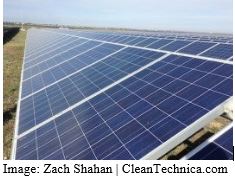I spend a lot of time critiquing solutions for low-carbon transformation, and that leads, inevitably, to people asking me: what works? What should we be doing? Most recently, that came in the form of a question on Quora that was well enough formed to trigger me to write down the solution set: “What exactly is the current scientific consensus on steps to combat climate change?“
Consensus is an interesting word. I tend to prefer consilience, where multiple lines of investigation lead to the same conclusions. That said, the following are the solutions or approaches that I see from my investigations and discussions as gaining consensus and consilience. It’s not the how, but the what. There are many paths that lead to these realities. One way to read the following is to consider that it describes the world in 2050.
This list doesn’t necessarily map easily to Project Drawdown because its approach is a cost benefit analysis of CO2e reductions for dollars, while this is a more aggressive transformational vision
The Short List
Electrify everything Convert all energy services to work directly from electricity instead of fossil fuels. Transportation, industry, and agriculture. All of it. All gas appliances must go. All road transport must be electric. Most trains and a lot of planes must shift to electric. Electricity creating biofuels or hydrogen for the subset of transportation that can’t be electrified. All heat from electricity. The US throws away two thirds of all primary energy, mostly in the form of waste heat from fossil fuels used in inherently inefficient combustion processes. We only have to replace a third of the actual primary energy we use today to maintain our lifestyle and economy.
Overbuild renewable generation All other forms of generation with the exception of nuclear were overbuilt, so we’ll do the same with wind and solar, and they are really cheap, so that is not that expensive. Also a bit of geothermal and some biomass. After all, about $3 trillion would provide all primary energy for everything the US does today.
Build continent-scale electrical grids and markets And improve existing ones. HVDC became much more viable with high-speed hybrid circuit breakers in 2011, and is an essential technology for long-distance, low-loss electrical transmission. It can replace some AC transmission and be buried along existing right-of-ways.
Build a fair amount of hydro storage And some other storage too. While storage of electricity is an overstated concern given overbuilt renewables and continent-scale grids, some is still required. Pumped hydro resource potential is far greater than the need, is efficient, and uses very stable, known technologies. Shifting existing hydro-electric dams to be passive, on-demand storage as opposed to baseload is also key. Fast response grid storage can be provided by existing lithium-ion technologies, as Tesla has proven in California and Australia. By 2050, we’ll have roughy 20 TWh of batteries on wheels in US cars alone, available both for demand management to reduce peak demand, soak up excess generation, and to provide vehicle-to-grid electricity as needed.
Plant a lot of trees We have cut down about 50% of the six trillion trees that used to grow on earth. Planting a trillion trees would buy us a lot of time as they sucked about a ton of CO2 from the atmosphere per tree over 40 years.
Change agricultural practices High-tillage agriculture is a process that keeps releasing carbon captured by the soil back into the atmosphere. Switching to low-tillage farming would buy us a lot of time as the CO2 captured by farmland would stay in the soil a lot longer, and some of it would be permanently sequestered.
Fix concrete 8% of global CO2 emissions come from making Portland cement. It’s absolutely critical to urban densification and industry, so we won’t stop making it. But it’s a huge source of CO2, about half from the energy and half from CO2 that bakes off limestone as it is turned into quicklime. Electrifying that energy flow helps a lot, but capturing that CO2 is one of the few places where mechanical carbon capture makes sense.
Price carbon aggressively The simplest way to get a lot of people and industries to shift away from emitting lots of CO2 is to make it expensive. That’s what carbon taxes do.
Shut down coal and gas generation aggressively Getting rid of coal is already happening, but it’s by far the biggest single source of CO2 emissions. Aggressive actions to eliminate burning coal are needed. For gas, the question is how few gas plants can we build, how many of them can we run on biologically sourced methane and how fast can we shut them down.
Stop financing and subsidies for fossil fuel Exploration, extraction, and use, just cut it out. The US alone spends tens of billions of dollars annually on subsidies of various kinds for the fossil fuel industry, and hasn’t done a thing about it since committing to eliminate them in 2009. The G7 and G20 have committed to eliminating subsidies, but progress has been very slow. The World Bank continues to finance coal, oil, and gas projects, despite commitments to end them.
Eliminate HFCs in refrigeration The Kigali Amendment to the Montreal Protocol on Substances that Deplete the Ozone Layer targets the unforeseen side effects of displacing ozone-depleting CFCs with high-greenhouse gas HFCs. Project Drawdown puts this at #1 on its ranked list of solutions by cost vs benefit. The US has not ratified this Amendment, although 65 other countries have.
We have the solutions. We just need the will to execute, which is being sapped by the losers in this necessary transformation, predominantly the fossil fuel industry.
